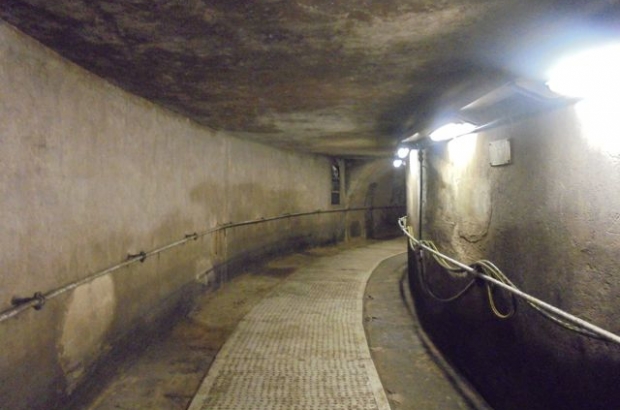- Daily & Weekly newsletters
- Buy & download The Bulletin
- Comment on our articles
The bowels of the city: We visit Brussels' reopened sewer museum
Brussels Sewer Museum is open again to the public from today after more than a year's closure prompted by a change of management. Serious and whimsical, the museum is located in the two former toll pavilions that grace the Porte d'Anderlecht.
One of only two sewer museums in the world (the other is in Paris) and the only one to be housed in listed buildings, the museum is a wonderful window on a hidden but essential city service.
After the Napoleon-prompted demolition of the city ramparts which was continued under the Dutch regime, the present pavilions were built in 1831-35 so that the city could continue to collect taxes on all goods entering the capital until the toll was abolished in 1860.
The visit starts in the south pavilion with a fascinating mix of scale models, films, memorabilia and explanations spotlighting the bittersweet history of the Senne River in Brussels, that went from bucolic stream to noxious open air sewer and then was banished underground to finally being rerouted around the northwest parts of the Pentagon as a sewage conduit.
From the pavilion, the visitor descends into the sewer system and walks along the underground Senne and the carrier/drain collector under the Chaussée de Mons, a surreal promenade complete with vintage underground street signs to show the way.
"Once you're inside, you hear a low growl," says Isabelle de Pange, curator of Brussels city museums. "These really are the bowels of the city. The Chaussée de Mons collector is like a street. Every five or six metres, you find the connection that corresponds to the house above.
"This museum has an educational role - a different vision on the construction of the city and the impact of everyday life. When someone takes a shower or turns on a washing machine, the water used ends up directly here. We see traces of fat, which are very difficult for sewer workers to deal with."
The visit ends in the north pavilion with a lighthearted display of rat dolls and a museum shop. However cute the rat dolls are, the harsh realities of working in this environment are not ignored. The museum highlights the difficult work of sewage workers in this 400km subterranean labyrinth.
This is a hostile environment with putrid stenches, numerous hazards including illicit disposal of toxic substances or those of insects, rats and pathogenic micro-organisms.
Additionally, in the event of a storm the sewers are immediately under pressure and workers have very little time to get out of lethal harm's way. For safety reasons, the museum staff reserve the right to refuse access to the covered river and sewer when there is heavy rain.
Brussels Sewers Museum
Pavillon de l'Octroi, Porte d'Anderlecht, 1000 Brussels
Tel: 02 513 09 64
Email: musea@brucity.be
Open Wednesday-Saturday 10.00-17.00 during school term, Friday and Saturday 10.00-17.00 in school holidays. Closed 1 January, 1 May, 1 November, 11 November, 25 December. Price €8, free for under-18s and residents of the city of Brussels. Free guided tours are available on the first Saturday of each month, on reservation.
Photo: Richard Harris









